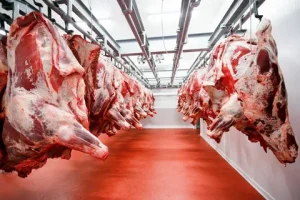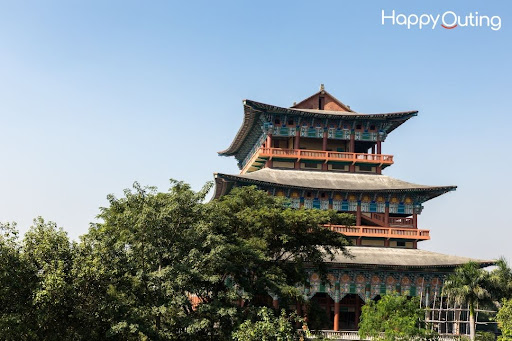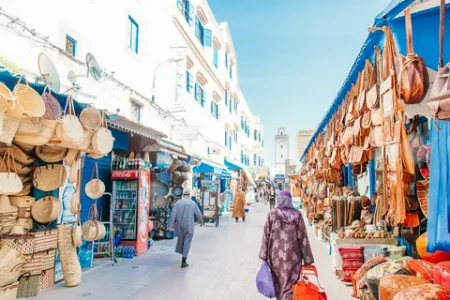Situated in Mustang, an area of picturesque fame and religious importance, Muktinath is the place for worship. At a lofty height of nearly 3,800 meters, maintaining religious importance from both Hindus and Buddhists. Each year, increased tourists and pilgrims crown Muktinath for blessings and for feeling the solitary ambience gifted by the Himalayas. Well, if you are sorry to leave from Pokhara to this holy site, a bus, jeep, and bike are your options to travel. This guide illustrates each of the above modes of transportation so that you can choose according to what comforts you more, time in hand, and budget.
- Route Overview from Pokhara to Muktinath
Learn about the route before selecting the means of transport. Pokhara is a city from which most of the trips begin in Nepal. A trip to Muktinath generally takes some form of a route such as:
Pokhara→Beni→Tatopani→Ghasa→Marpha→Jomsom→Kagbeni→Muktinath.
The distance is somewhere between 170 to 200 km. With mountain terrain, however, that conversion of distance into time can take anywhere between 10 and 15 hours, or even longer during bad weather and poor road conditions.
- Reaching Muktinath by Jeep
Jeep travel is popular and considered the most comfortable way to get to Muktinath from Pokhara. It offers maximum comfort and flexibility, especially when it comes to families or groups.
Why Choose a Jeep?
- Direct travel: Multiple changes with other vehicles are not necessary.
- Better for rough roads: From Jomsom to Muktinath, roads are rugged and gravel-based. A bus or bike would shy away from an onslaught of gravel, whereas jeeps seem to relish it!
- Available packages: Private and shared jeeps are available, and driver services are offered. Experienced drivers prefer the mountaineous routes.
Duration & Cost
- Time: Around 10-12 hours
- Cost: Shared jeeps go for about NPR 2,000 to 3,500 per person. Private jeeps will set you back anywhere between NPR 25,000 and 35,000, depending on the time of year and the kind of vehicle.
One can also locate Muktinath tour package from Gorakhpur, including the journey from Gorakhpur to Pokhara, overnight stays, and the jeep ride to Muktinath-everything for a neat, hassle-free trip.
- Reaching Muktinath by Bus
In the case of tight budgets, buses may be an economic choice, although they lack comfort with their long travel hours and bumpy roads.
Bus Options
- Local buses ply up to Jomsom from Pokhara. From Jomsom, you have to hire a shared jeep, or go trekking down to Muktinath.
- Due to uncertain terrain near the temple, no buses run directly from Pokhara to Muktinath.
Duration & Cost
- Time: Around 14-16 hours (including the transfer time)
- Cost: Around NPR 1,500 to 2,500
Buses can be rather slow and often get belated, more so during monsoon. Yet, for backpackers or those travelers who want to experience a bit of the local life during their Nepal trip, this makes a fine choice.
- Reaching Muktinath by Bike
The serious adventurers and motorcyclists often opt for riding from Pokhara to Muktinath. This is one of the most view-laden routes to the destination in Nepal and an experience you would remember forever.
Things to Consider
- Train well in off-road riding.
- Mostly paved is this route from Pokhara to Beni, but after that, it can be hard, having some rocky terrain, dust, and river crossings.
- There are less fuel stations, so more is better.
- The need for riding gear, warm clothes, and a bike in the perfect condition cannot be stressed enough.
Duration & Cost
- Time: 10-12 hours (more if you take your time)
- Cost: Renting a bike from Pokhara would set you back by about NPR 2,000 to 3,000 per day.
This would be apt for those who want to explore nature by themselves and are good with their physiques. This is one of the highlights put down by many travelers in their Nepal trip, especially those who enjoy motorbike touring.
- Best Time to Travel
Best is considered to the season from March to June and September to November to visit Muktinath, during which the skies are clear, the temperature is comfortable, and road conditions may be safest.
Stay away during monsoons, i.e. July-August. Landslides and floods frequently block the road. Traveling during winters i.e. from December to January, is risky due to heavy snowfall in the Mustang region.
- Permits Required
You’ll need two permits to enter the Muktinath region:
- ACAP (Annapurna Conservation Area Permit)
- TIMS (Trekkers’ Information Management System)
Permits are issued by the Pokhara Tourist office. If you are booking your permit through a travel agency or part of a Muktinath tour package from Gorakhpur, the permit is generally included in the package.
- Further Useful Tips
- Stay hydrated: Muktinath is located at an altitude; as such, mild altitude sickness symptoms could be felt in the air.
- Carry cash: ATM machines are very few after reaching Pokhara.
- Book early during peak seasons: Jeeps and hotels get filled up during peak season very quickly.
- Respect local customs: Muktinath is a sacred place, so please dress suitably and maintain silence within the temple premises.
Final Thoughts
From Pokhara, the Muktinath journey is one of adventure, spirituality, and a feast for Nature. Choose a comfortable jeep ride, an economical bus ride, or a totally thrilling biking experience-the journey to Muktinath will be etched in your memory forever. Many travelers base their entire Nepal trip on Muktinath just because of the deep cultural and spiritual connection, along with breathtaking views of the Himalayas.
For anyone traveling from India, considering a Muktinath tour package from Gorakhpur will smoothen the journey by taking care of everything from transportation to permit formalities. However, you want to take it, Muktinath certainly guarantees you cherishable memories for the lifetime.






